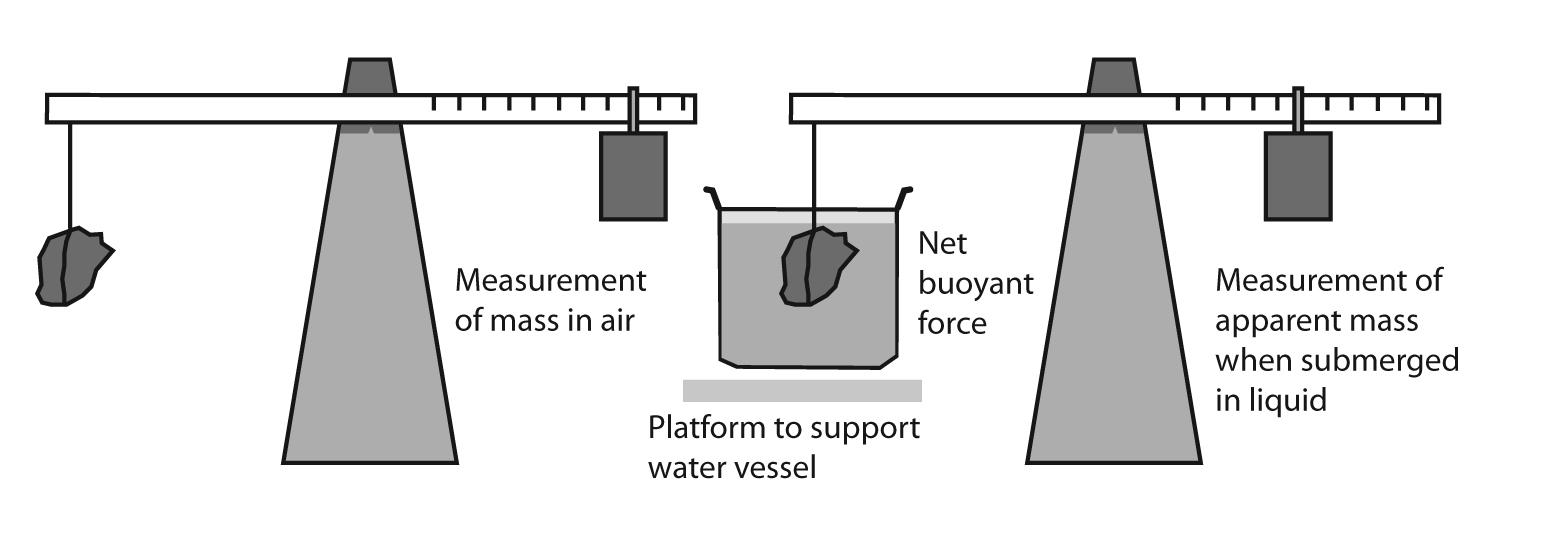|
How to Series- Density An explanation of how to measure density DENSITY
Archimedes' Principle states (in short) that an object immersed in water is buoyed up by a force equal to the weight of the fluid that was displaced by the object. Confused? Don't be...
This principle is simply the conceptual basis for the determination of density by providing an accurate method for determining the volume of irregular shaped objects, thus enabling the density to be established.
An object is weighed (massed) in air and found to have a mass (m) of X gram and is then submerged in water and found to have a mass of Y (m1) gram.
Then it can be shown that it has displaced X - Y (m - m1 ) gram of water. As water has a density of 1 gram per cm3, this implies:
Volume of object (V) = X - Y cm3
Therefore the density (p)of the object is:
 Density = mass / volume
See below:
 Note! The container of water in which the object is submerged is supported on a platform so that the scale does not measure the mass of water. In most of the balances we sell, there is an under-weighing facility that allows for objects to be suspended while being weighed in and out of water. Ask for "below balance weighing" balances.
|